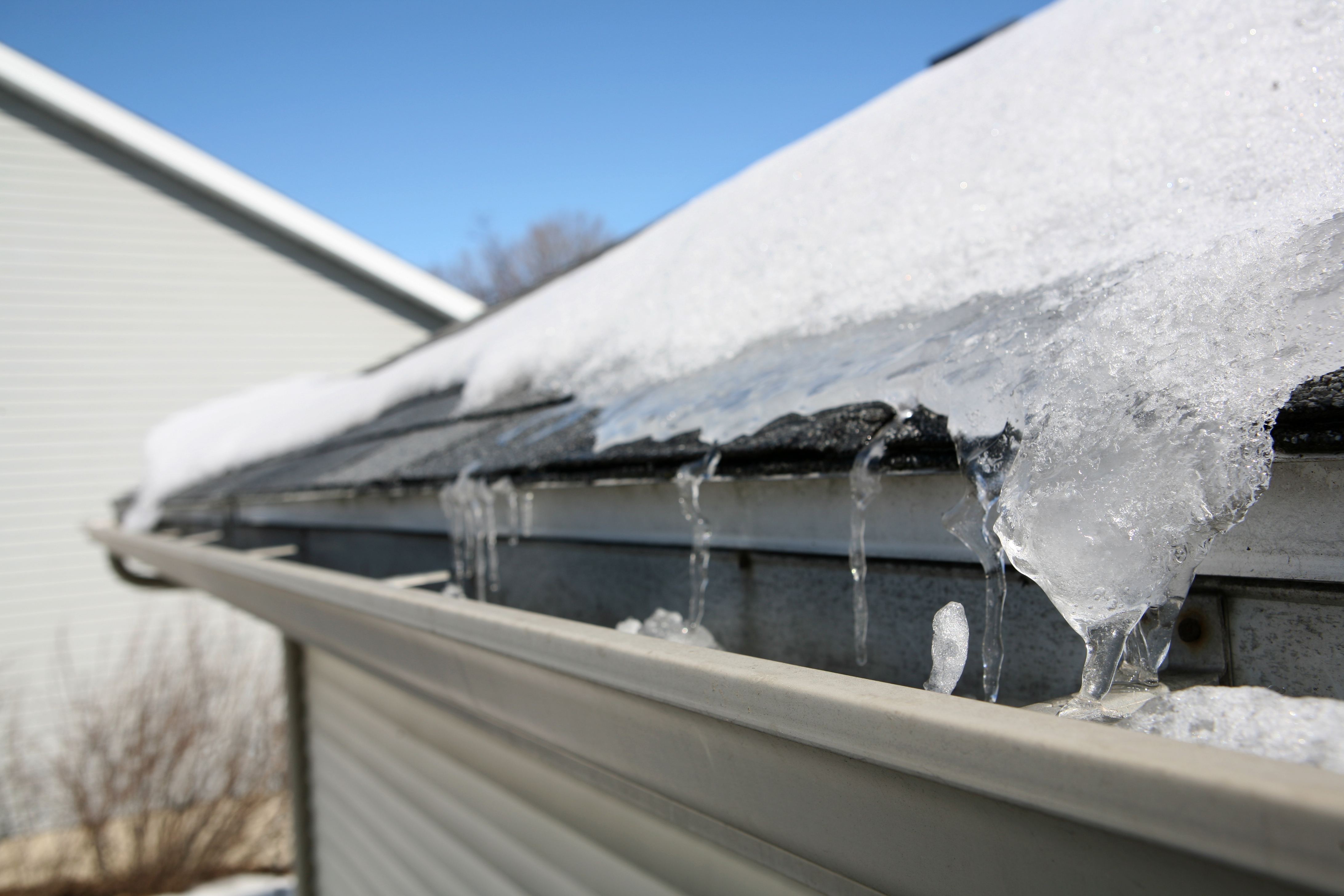
Ice dams are more than inconvenient and unsightly; they are a sign of insufficient insulation and venting that can lead to extensive – and expensive – water damage to your home. During the warm part of the day, melting snow and ice can pool behind the ice dam. That moisture then seeps under the shingles, dripping through the roof into the soffits, walls and ceilings. You may first see evidence of this in the form of rust spots on drywall fasteners, followed by peeling paint, sagging drywall and even staining around your windows and doors. Fixing these effects can come with quite a high price tag.
The problem happens when your roof is warmer than 32 degrees F, which is warm enough to melt the snow. However, the edge stays freezing, and solidifies the runoff. This means your attic is too warm.
Fortunately, there are ways to prevent ice dams from occurring in the first place.
- Add insulation: Now is a good time to measure how deep your attic insulation is. You should have between 12 and 14 inches of fiberglass or cellulose insulation. Add more if you have to. Blown-in cellulose and fiberglass are preferable over rolls because they conform to every nook and cranny.
- Add more venting: Because attic ventilation works by drawing in cold air and sending out warmer air during the winter, this naturally keeps your attic cool, which is ideal for preventing ice dams. One way to get more ventilation is to add roof and soffit vents.
- Close up attic bypasses: Did you know one-third of heat loss happens through the ceiling and into the attic? That’s because you may have leaks enabled by unblocked walls, drywall gaps, and cracks that have formed around light fixtures, pipes, chimneys and access hatches. In order to plug up these air leaks, you must get into the attic, pull back the insulation, and use foam or caulk to fill those gaps. This can be difficult and even downright impossible — not to mention dangerous – for the uninitiated. You should always call a professional in for this and other related tasks.
Call Hi-Tech Windows & Siding today at 800-851-0900 to schedule a roof inspection. We can suggest ways to prevent ice dams and perform all work safely and efficiently before the deep freeze of winter really sets in.
- Category: Roofing Contractor
- 0 comment
